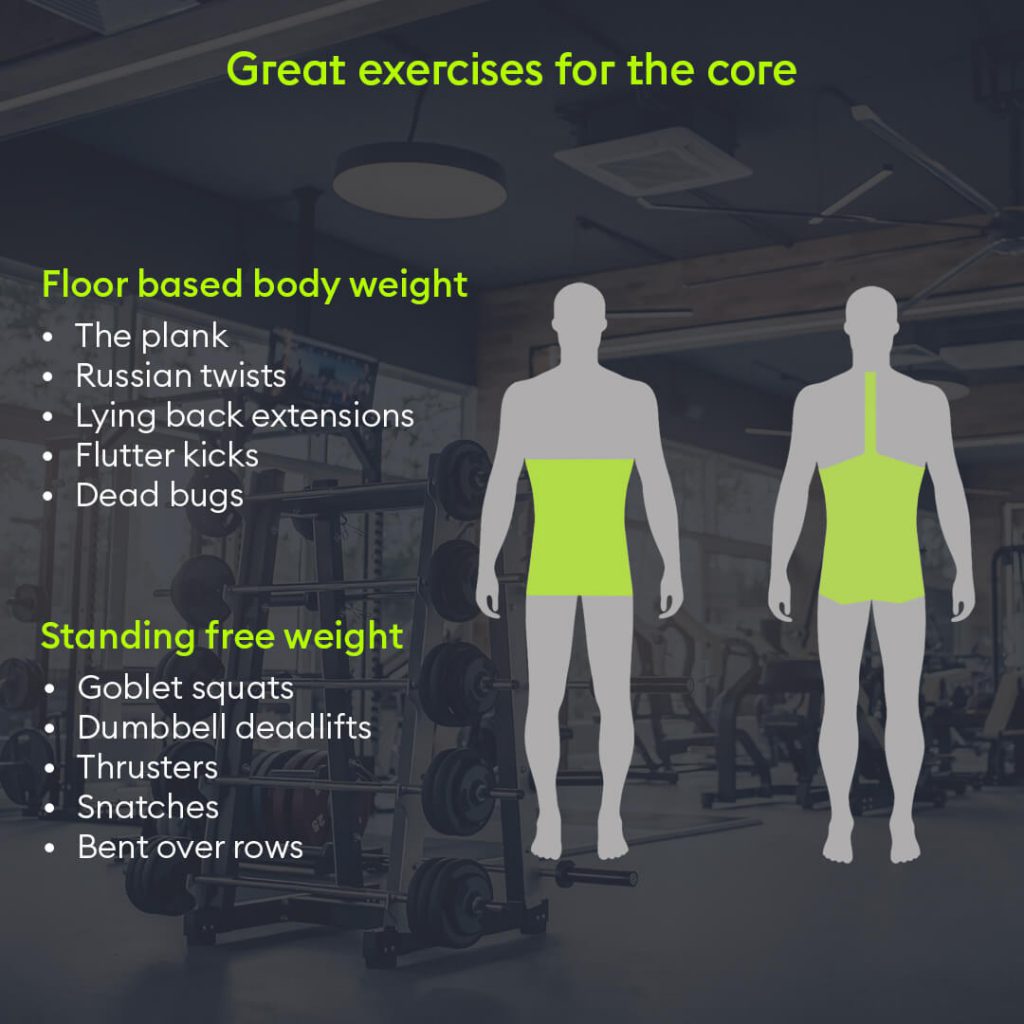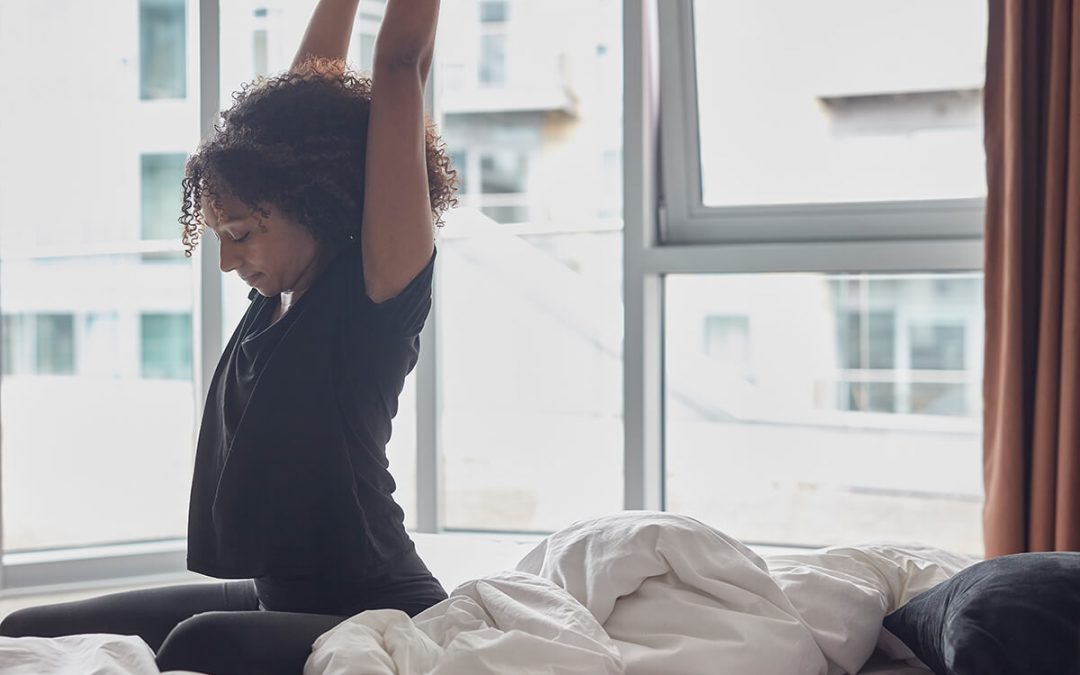When we think of core workouts, a couple of things come to mind. Sit-ups. Planks. A floor-based ab workout. A visibly toned tummy. It’s easy to reduce core workouts to these simple things.
And whilst they’re rightly associated, there’s so much more to the core and improving its condition. The list of reasons why it’s worth doing is long. And, spoiler warning, they don’t all involve looking better without a top on.
Understanding what muscles make up the core is the first step in figuring how why and how to exercise them. A strong core keeps you healthy in many ways, all of which make it worth investing some time in.
Here we go.
What is your core?
It’s often misunderstood that your core and your abs are the exact same thing. Not quite. Your abs are part of it, but your core is actually many different muscle groups that make up most of your torso.
Your core isn’t just the muscles on the front of your body either; it includes the full 360-degrees. The muscles in your back are a significant part of the core and contribute heavily towards its strength.
In short, your core is your trunk and connects your upper body to your lower body. Some people say that if you were to take away your arms and your legs, your core is what’s left.
In long, your core is made up of deep, middle, and outer layer muscles. The list of muscle groups is extensive, and most of them you might never have heard of before. That’s because they’re tucked deep inside your spine and serve you daily without you even realising. However, the most well-known muscle groups in the core that you might try and target with exercise are:
The abdominals (your tummy)
The obliques (the sides of your stomach)
The latissimus dorsi (often called the lats and make up a big bit of your back)
The adductors (inner thighs)
The gluteals (your bum)
The erector spinae (the long muscle that runs down the spine)
Diaphragm (bottom of your ribcage)
Pelvic floor (between your legs, below your pelvis)
What does your core do?
Because the list of muscle groups included in the core is so long, so is the list of the functions it serves. However, the key takeaway is that your core is what stabilises you. It supports your spine, keeps your posture upright, and controls your movement by keeping you stable. Pretty important then.
The deep layers of your core support the small movements of your spine. The middle layers of your core give a strong foundation to move from and protect your lower back. The outer layer of your core lets the various joints around the body move properly and provides you with the strength you need to lift and hold things.
If the core cannot do these things, then the risk of back injury is much higher. Chronic injury to the spine is often caused by a lack of core strength and control over a long period. The most common cause of this is an overly sedentary lifestyle. Sitting at a desk and hunching over a computer for too long can easily lead to a weak core because your chair supports you, and your core is rarely activated. Something a lot of us find hard to avoid.
What are the benefits of a strong core?
It’s been a bit of a science lesson so far, so let’s break down the real-life benefits of core strength into chunks.
Your posture will be better
The more you activate your core, the better your posture will be. This is because the core allows you to hold ‘good form’ and maintain a neutral spine. The less you activate your core, the weaker it will be, and the poorer your posture will become. Bad posture that isn’t corrected can worsen, increasing strain on the spine and ending up in pain or injury.
Your back won’t hurt as much
It’s an incredible and versatile thing, but your spine isn’t very stable. It can only support loads of around 4-5lbs before it buckles. It’s your core and its all-important stabilisation that allows you to go about your daily activities. The muscles in your back take a lot of this work on. If they’re not strong enough, you will likely strain them. This can lead to short-term and long-term back pain that many people suffer from. A stronger core will help avoid and relieve this, as the muscles can better deal with the stress they’re being put under.
You’ll be able to do more in the gym
Here’s an anecdote almost everyone has experienced. You’re in the gym or following a class, and there’s an exercise which should be easy, but it’s hurting. You don’t really feel like it’s working properly because all you can feel is a niggle in your back that gets worse with every rep you do. More often than not, this is because of poor exercise form. Poor exercise form occurs when your core can’t support you in the way that you want it to. The first muscles that fatigue are the ones in your core, not the ones you’re looking to target. This means that you can’t continue to do the exercise correctly. By increasing your core strength, you’ll be in a better position to finish your set of squats without any complaint from your lower back.
Your pelvic floor will thank you
Everyone has a pelvic floor, but women are likely to be more aware of it. Strengthening these essential core muscles can help with bladder control. Pregnant, post-menopausal, and older women are likely to have issues with that, but improving your pelvic floor is something that can affect everyone. By improving it now, your later self will probably thank you. It also makes sex better if you needed another incentive. Working your pelvic floor can be done specifically with discrete exercises and is also conditioned using lots of common gym movements like squats.
How do you exercise your core?
The reality of increasing core strength is probably easier than you think. It doesn’t ask for hundreds of sit-ups every day
.
Because the core is made up of so many muscle groups and plays such an important role in stabilising every move you make, most resistance-based exercises will improve it.
That means all sorts of exercises contribute towards a stronger core. Squatting, lunging, push-ups, holding a plank, doing burpees. Most things you can think of. But if you’re looking to give your core a little bit more attention, here’s what it helps to know:
Learn how to ‘Engage your core’
Pretty often, in a workout or exercise class, your trainer will say ‘brace your core’ or ‘engage your core’. But what does that actually mean, and how do you know if you’re doing it?
Tightening your core muscles helps stability and most exercises require it. Annoyingly, it’s not as simple as pushing your tummy out or sucking it in. Abdominal bracing is hard to describe, but there are anecdotes that can help.
1. Prepare your trunk as if you’re about to be punched in it
2. Take a deep breath into your stomach and expand your sides, creating a robust and sturdy cylinder with your torso
3. Notice the feeling right before you laugh or core – at this point, your core is braced
4. Imagine your tummy being ‘zipped up’ not sucked in.
Start with some floor-based exercises
An excellent way to begin progress is by doing some floor-based core exercises. You can add these onto the end of any exercise session. These are usually bodyweight exercises that won’t risk injury to your back. Some favourites are:
1. The plank
2. Russian twists
3. Lying back extensions
4. Flutter kicks
5. Dead bugs
6. Supermans
Prioritise free-weight standing exercises
There’s definitely a place for every type of exercise in your routine. What you do depends on your goals. But for improving the core, exercises that are done standing up with free weights like dumbbells and kettlebells are best for improving your core strength.
Seated and fixed resistance (gym machine) exercises are helpful for other reasons but shouldn’t be used as the main parts of your workout routine if you’re looking to improve the core.
If your short on time and work out a couple of times per week, here are some full-body exercises to include in your routine:
1. Thrusters
2. Reverse lunges with a rotation
3. Dumbbell deadlifts
4. Bent over rows
5. Goblet squats
6. Snatch

That’s pretty much all you need to know about improving your core. Help it do its job by sitting up straight, exercising often, and strengthening yourself. Make sure to give it the attention it deserves.



